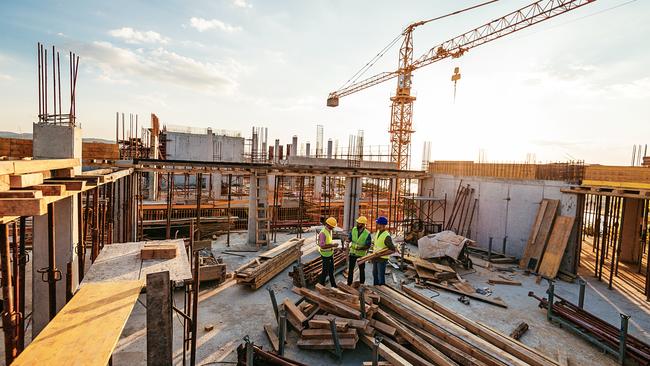Figures that made the Aussie dollar bounce
It was an ever so slight move in the latest data, but it appears likely to have a major impact on the chance of another rate cut.

Interest Rates
Don't miss out on the headlines from Interest Rates. Followed categories will be added to My News.
The chance of a Melbourne Cup Day rate cut from the Reserve Bank of Australia is next to zero after inflation data inched higher this morning.
Quarterly inflation fell to 0.5 per cent in the three months to September 30 but annual inflation rose to 1.6 per cent.
The slight increase is edging closer to the RBA’s preferred range of between 2.0 and 3.0 per cent, with the market now pricing in about a 6 per cent chance of a cut next week.
RELATED: Aussie dollar jumps as the chance of another cut from the RBA halves
With the likelihood of a rate cut tumbling, the Australian dollar spiked. It rose from 68.51 US cents to as high as 68.72 after the data was released by the Australian Bureau of Statistics.
“Inflation is still low for sure,” Westpac currency expert Sean Callow told news.com.au.
“But given that the RBA is so focused on the unemployment rate as its key indicator and getting that lower.
“And given how patient the RBA seems to be about inflation getting back on target, then it would have had to have been super low inflation to really get the market excited (about another cut).”
Small pop higher in A$ and pricing for RBA rate cut next week slips to just -2bp after Australia Q3 CPI meets forecasts. Trimmed mean 0.38%qtr, 1.55%yr i.e. very low but RBA expected to rely on bullish 2020 GDP forecasts. Keeps A$ in familiar ranges #ausbiz pic.twitter.com/F8Z2qaTUIj
— Sean Callow (@seandcallow) October 30, 2019
On Tuesday night, RBA governor Philip Lowe revealed a willingness to wait and see how the economy has reacted to the three cuts so far this year which have slashed the official rate to just 0.75 per cent.
“We are confident that these reductions are helping the Australian economy and supporting the gentle turning point in economic growth,” he said at a lecture in Canberra.
“In doing so, low interest rates are supporting jobs and overall income growth.”
Mr Callow said it was unlikely the RBA will slash rates again this year, with just one-third of a chance it will be reduced again before Christmas.
“The dip in the unemployment rate, hopes over a trade deal, and indications the RBA would rather bide its time and see how these three rate cuts impact the economy,” Mr Callow said.
“It has left us pretty comfortable with our view that the RBA leaves rates steady until February.

The most significant rise in costs for the September quarter was international holiday, travel and accommodation, where prices — which are vulnerable to currency fluctuations — rose by 6.1 per cent, according to the ABS data.
Clothing and footwear prices also increased by 1.0 per cent in the quarter, despite subdued consumer demand, suggesting falls in the Australian dollar that followed the RBA’s three recent cash rate cuts were having an effect.
Tobacco was the next biggest contributor to inflation with a 3.1 per cent rise, followed by childcare and property rates and charges — both at 2.5 per cent.
Fuel prices fell by 2.0 per cent, vegetables by 2.5 per cent and fruit by 3.1 per cent.
BIS Oxford Economics senior economist Sean Langcake said “today’s data provided few surprises and inflation is expected to remain below the RBA’s target range in the near term.
“We expect rates will remain on hold through the rest of the year, but a further easing is likely in early 2020 if the labour market underperforms.”
—with AAP
Do you think the RBA will cut rates again before Christmas? Comment below @James_P_Hall | or get in touch at james.hall1@news.com.au
Originally published as Figures that made the Aussie dollar bounce



